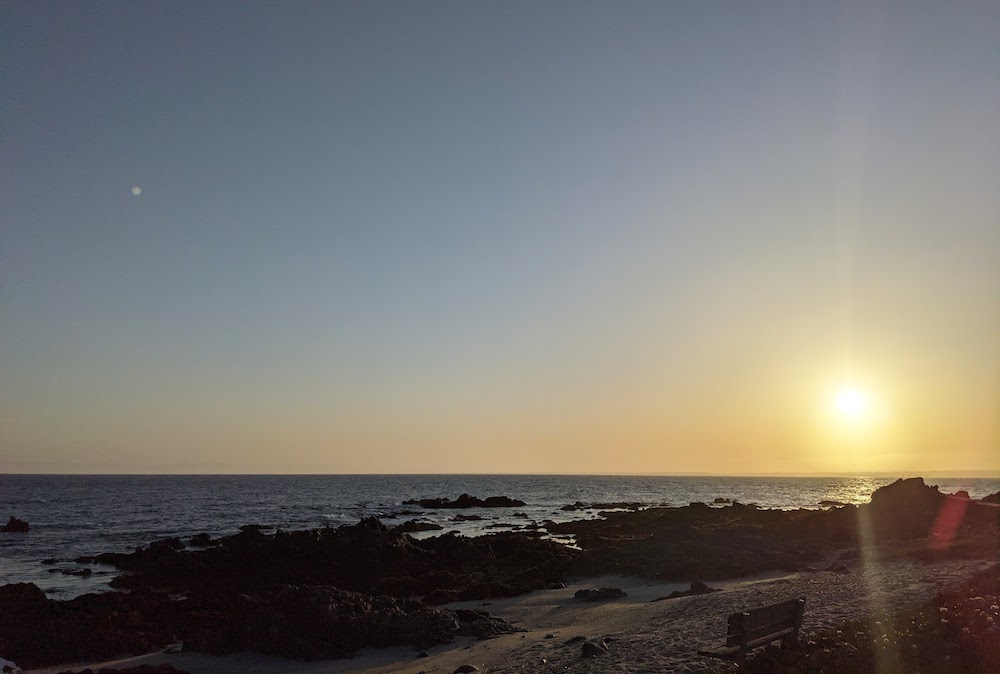
May 6, 2022 – It’s not long after sunrise when the magic starts happening.
Spear fisherman Daniel Kim and I splash into the shallows at Perkins Park in Pacific Grove, where electric pink “magic carpet” succulents ring the shore.
The early light plays softly on the water’s surface. The sky spreads wide and pale blue, pelicans soaring through in a theatric chevron formation. Beds of kelp sway 400 meters out to sea.
In front of our face masks, a dancing swirl of bright green seagrass swallows up our viewscapes completely. It works like the closet in The Lion, the Witch and the Wardrobe: We must brush through this magical and absorptive forest to reach Narnia beyond.
Only instead of a talking lion king and brave warrior mice appearing when the view clears, we’re meeting creatures with different sets of superpowers: a half dozen otters including a mom and her fluffy pup (superpowers include eating a quarter of their body weight daily); curious harbor seals and another mom-juvenile pair (special skills include startling meet-and-greets); and a gorgeous lingcod (whose gifts include camouflage and long, sharp teeth).
The seas are calm as we gradually kick out to the kelp, but the waves and waves of majesty keep coming.
And that may be the low key real mission of Fin + Forage: Absorb—and honor—Mother Nature’s wonder.
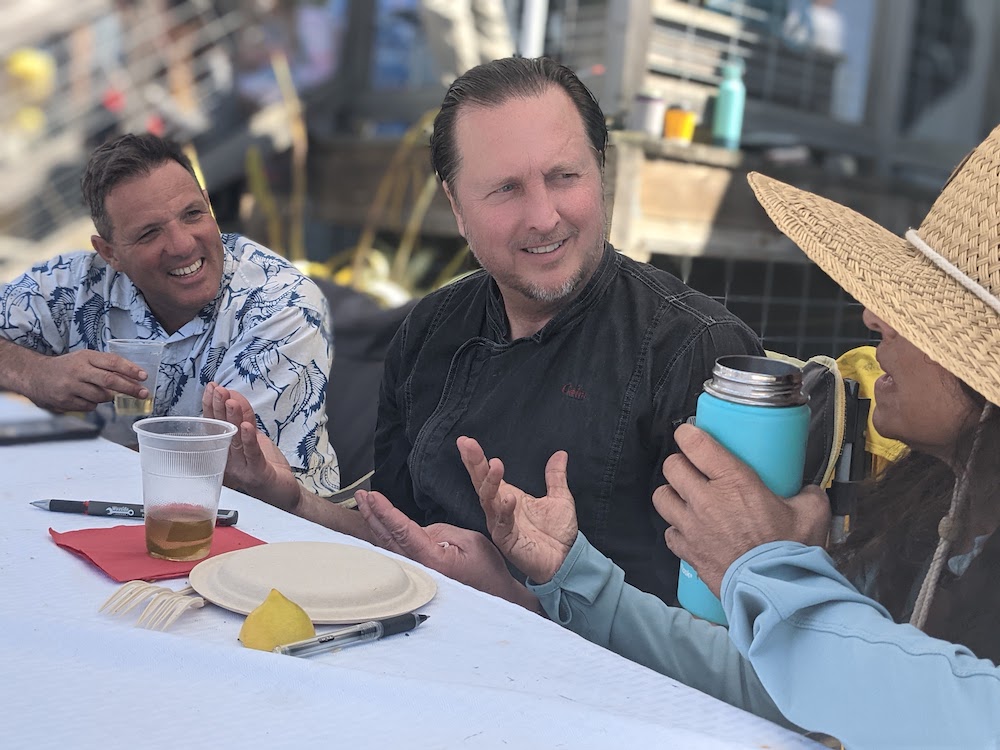
As I learned first hand as part of an ambitious catch-and-cook adventure deep down the Big Sur coast, the official Fin + Forage mission goes like this: “Few things in life have more power to unite than food, yet for those of us privileged with food security, the act of obtaining, preparing, and eating food too often becomes an afterthought.”
That translates to loving gently on the ecosystem with smart spearfishing, clever foraging and thoughtful preparations.
For the second-ever Catch and Cook, which Edible previewed earlier this month, 24 competitors fan out around the area to complete their hunt. Then they doubled back to craft dishes on camp stoves assembled on the sand spit between Monterey Bay Kayaks and the Recreation Trail.
At the same time, dozens more citizen stewards exterminate buckets of overpopulated and invasive sea urchins in exchange for raffle tickets. Dozens more hunt trash. At least one contestant does both, in addition to catching and cooking.
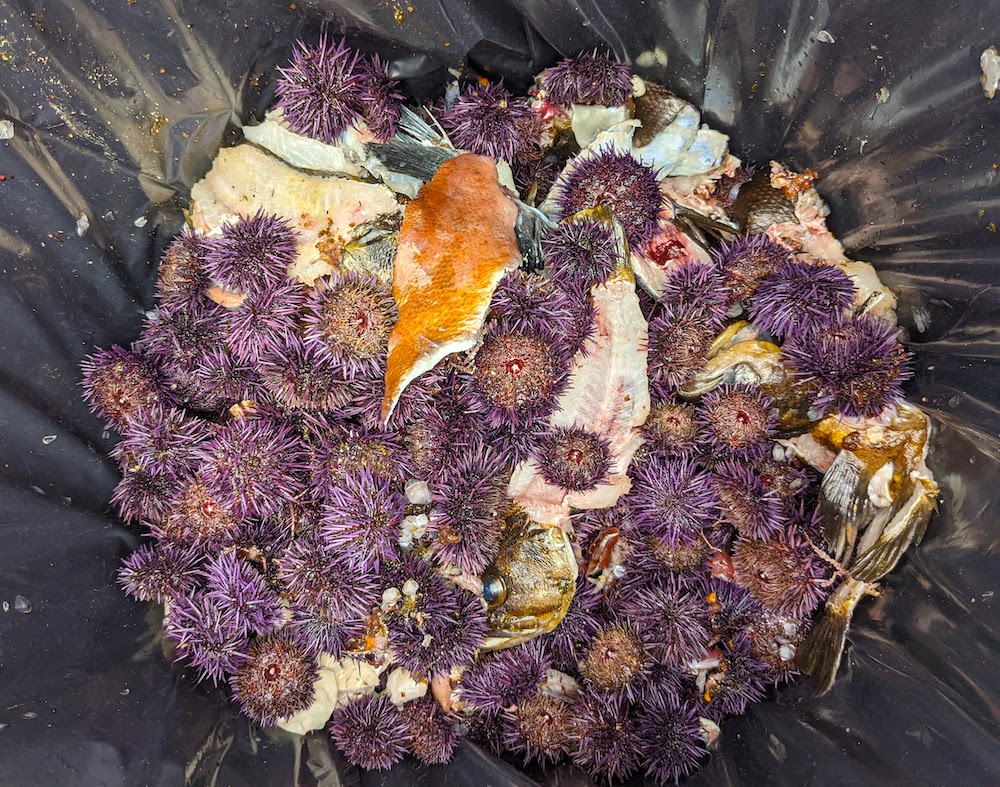
Meanwhile event partner and beneficiary of the proceeds nonprofit Backcountry Hunters and Anglers encourages all attendees to capture data about their prey. That might be a giant lingcod one contestant spears while it’s eating a monkey-faced eel or the urchins that will so often be woven into recipes.
Backcountry California Chapter coordinator Devin O’Dea hopes to use tools like the iNaturalist app (which has a Catch and Cook tab) to build a larger profile of the event and track year-to-year changes in local habitats.
“It allows us to evaluate fishery trends,” he says. “The more we can participate as citizen scientists, the more we can inform management, from species of special concern to invasives.”
So, long before we get to the wizardry of the food, the caretaking of nature’s magic is already well underway.
F + F founder Eric Keener organizes the Catch and Cook competition Kim aims to win.
“It’s a vehicle for the message of taking care of our ocean,” Keener says.
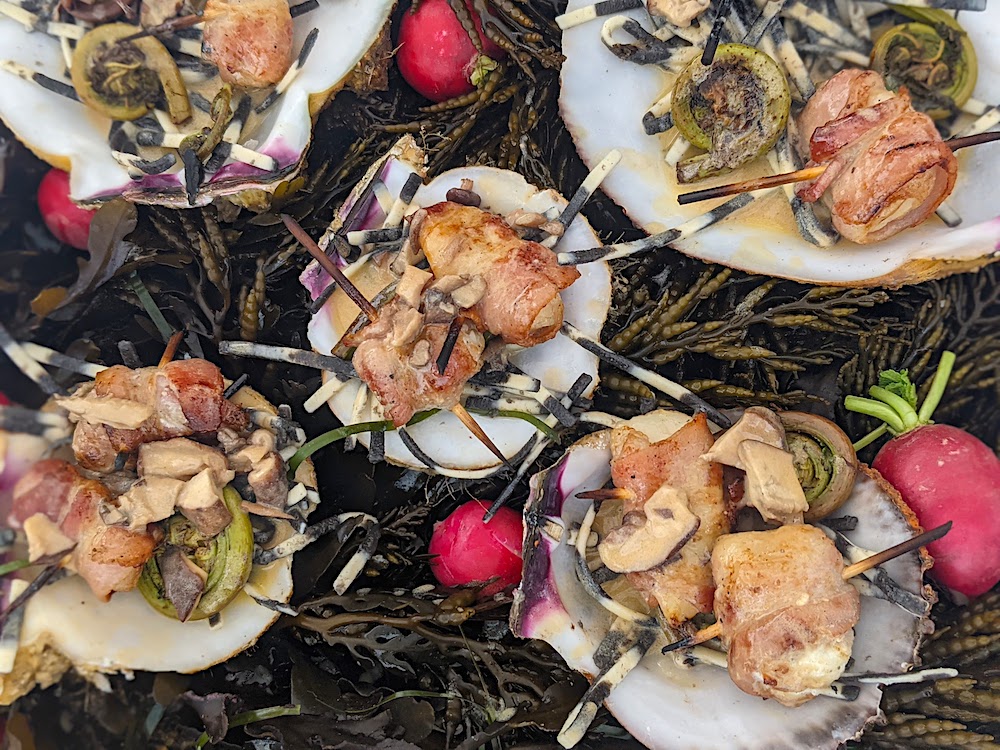
Anticipation can whip up a hell of an appetite—and thanks to the pandemic more than two years passed since the first public version of Catch and Cook.
One of the things that becomes clear rather quickly along contestants row: Installment number two, partly due to the wait, will get wildly more ambitious in its creations.
Alyssa Bellamy purchased a contest entry before they sold out (in less than a day). Like many return competitors—she finished fifth in 2019—she’s been meditating on her plan for a while.
In her case, it’s a two-pronged plan with multiple recipes in play: With a speedier hunt, she’ll have the three hours needed to make fresh pasta from scratch to go with seared crispy skin rockfish and uni butter. She reveals the plan as she issues my freediving gear at Bamboo Reef Dive Center, where she works, and her Welsh corgis Nori and Toro lead the welcome wagon.
“There’s a lot of strategy to this whole thing, dictated by what you catch and what time table you have to work with,” she says, before echoing a Fin + Forage mantra. “You’re not going for biggest fish, you’re going for tastiest dish.”
She was able to pull off the pasta with a rockfish roe sauce, ultimately finishing near the middle of the field (which speaks to the heady level of competition). Her backup plan—rockfish risotto with fish carcass stock—doesn’t sound too bad either.
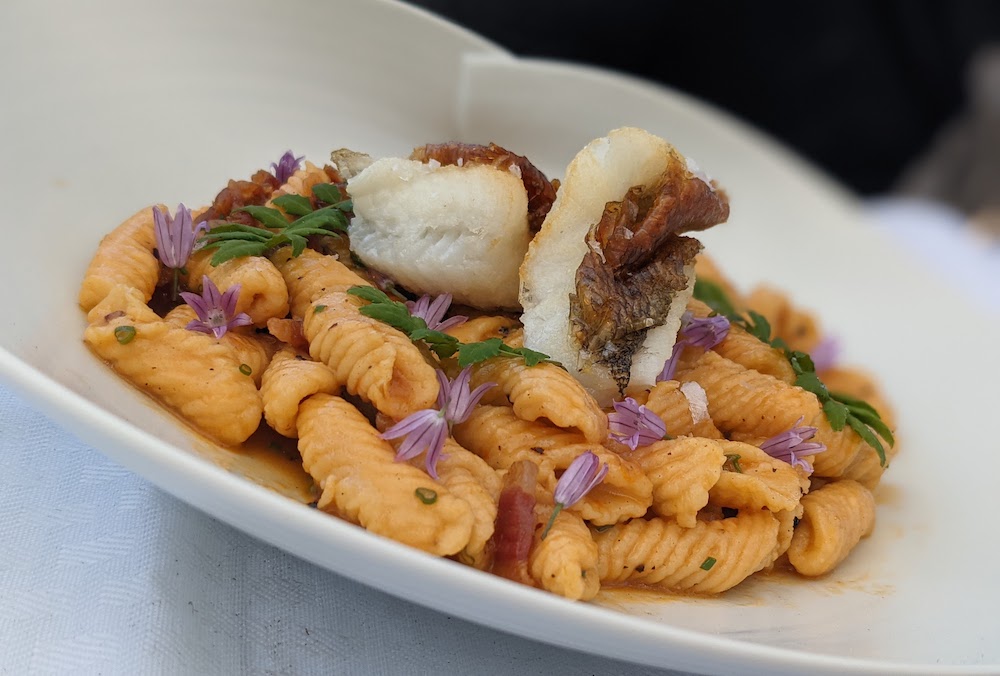
Her use of more parts of the fish speaks to the ethos of the event. Contest criteria requires judges to evaluate on things like “highlighting the underdog” for featuring less glamorous species like perch, monkeyface eel or opal eye. Use more of the fish, more points. Forage more of the dish, more points. Buy less stuff at the store, more points.
And competitors clearly get the memo. Second place finisher and defending champ Huan Le, in presenting his Japanese-style sea urchin steamed egg custard (!?) to the judges, announces, “Everything in my dish is picked, foraged, speared, borrowed or stolen,” adding, “I made it as challenging as possible.”
“Like a pirate!” says judge Elsa Rivera.
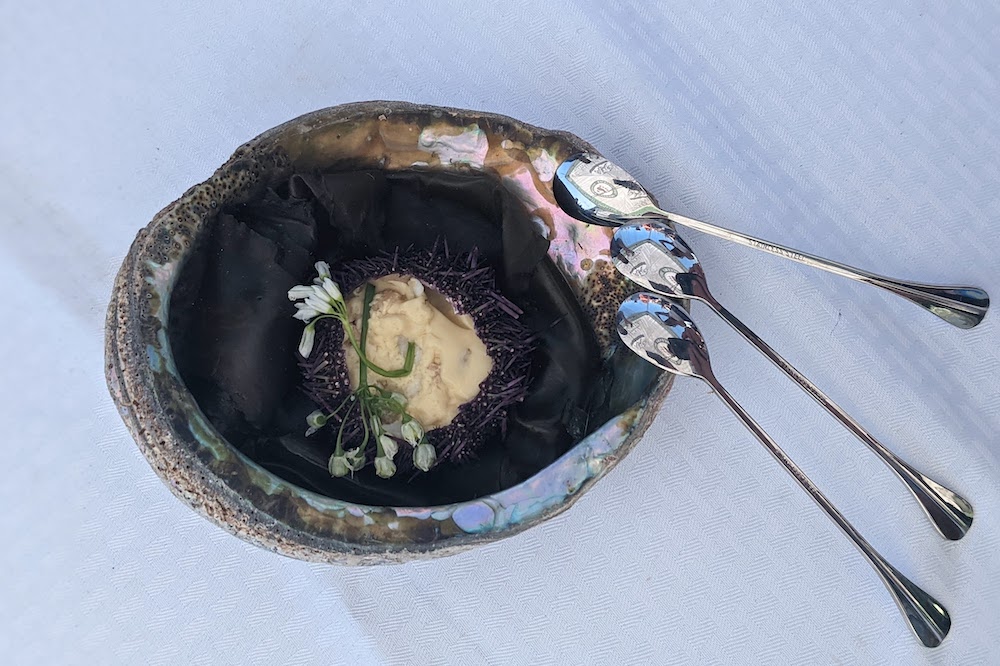
Back at Perkins Park, Daniel Kim floats at the surface, then bends at his waist, lowering his torso and then popping his fins into the air.
Once below, he glides deeper and deeper. At around 30 feet deep, something catches his attention, but he doesn’t make any sudden movements.
He clicks on his flashlight, pokes his beam into a crevice underneath the reef on the ocean floor and pulls the trigger. I can hear a soft thud.
The next thing I know he’s slowly surfacing with a rockfish on his spear.
“It’s so little!” he says at the surface, laughing. But combined with the other rockfish he’s already popped—and given the contest’s bigger-ain’t-better DNA—it’s all he needs.
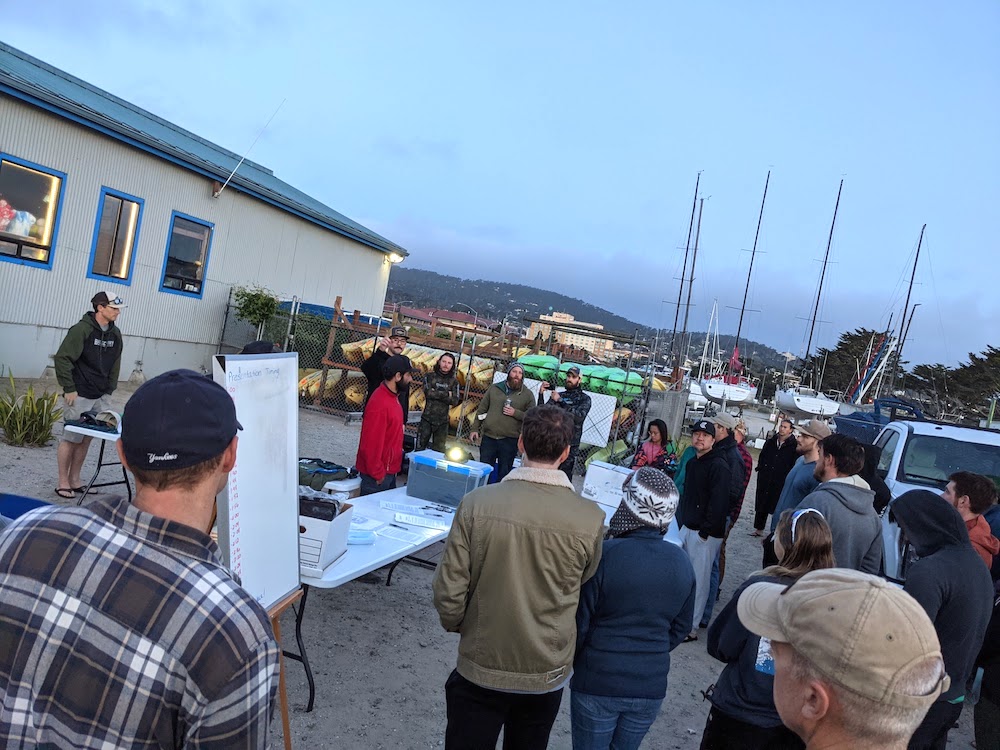
Before all the magic starts metabolizing, at the predawn safety check each contestant draws a number. First draw gets their pick of time slot. Kim, who’s a biotech salesman, gourmand and home chef—“My cooking’s definitely better than my hunting,” he says at one point—hears his number come on the early side. He selects the latest slot (3pm). Bellamy snags the next latest. Both will be making pasta from scratch.
So we know who’s presenting last. The first contestant up at the judging table arrives with style points thanks to an elaborate spread of seaweed and shells, topped with bacon-wrapped lingcod and scallop in a foie gras sauce.
“The best of America, the best of France!” shouts Emmanuel de Maistre in his native French accent.
Other dramatic dishes follow, the gathering crowd oohing and awing accordingly.
Dan Silviera—most notable in the spearfishing community for the size of his catches in competition—pours kelp mojitos to go with his Mediterranean-style rockfish, perhaps the most flavor-rich dish of the day, and a fifth-place finish.
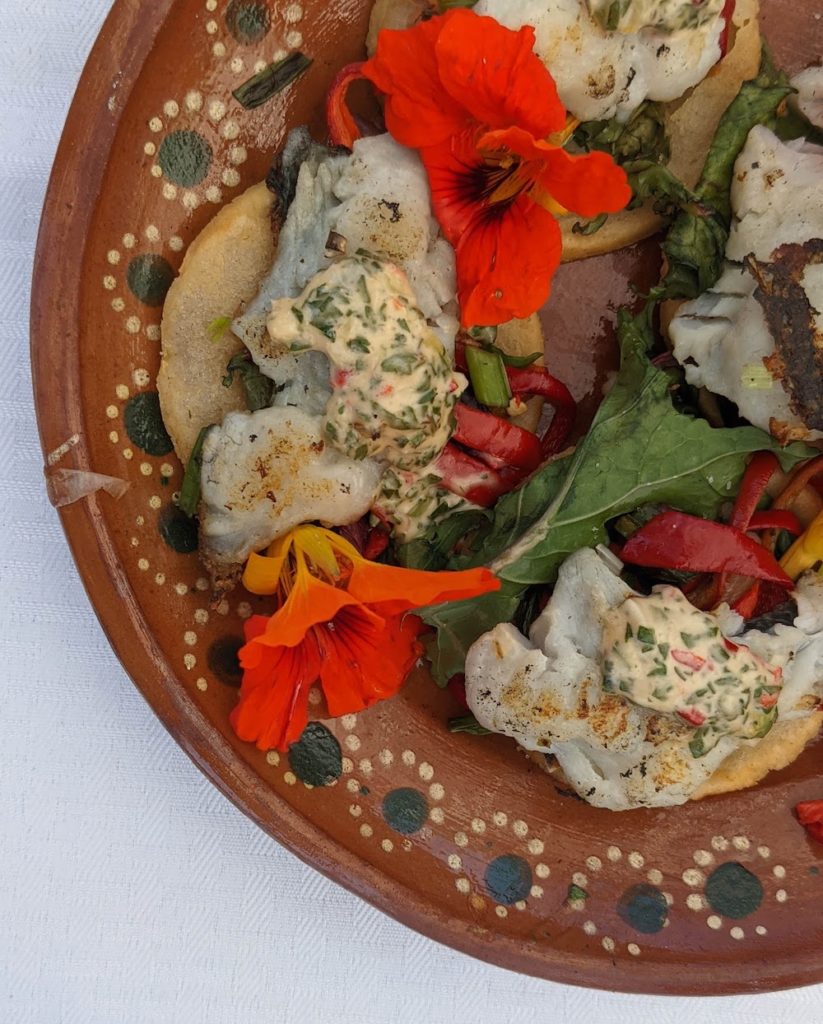
One competitor describes a Saudi dish for which he called grandma to get the recipe. Another delivers a striped perch tostada with a hint of ghost pepper. At one point judge Colin Moody uses his signature Fin + Forage abalone key to divide a Baja fish Benedict. A man from Michigan announces his dish features the third saltwater fish he’s ever shot. Fourth place Daisy Valdivieso dishes up a delicious fish burger and nopales fries with so many grown or foraged ingredients she epitomizes the event’s aims all on her own.
Valdivieso is half of three couples rooting each other on, but also competing against one another.
Connor Hale and Rebekah Phillips represent one of the pairs.
“She’s a much better diver and I’m better in the kitchen so it’s a great combination, a great balance,” says Hale, who makes rockfish filet with creme fraiche uni sauce and tiny beads of kelp “caviar.” “Going in I felt I had an edge, but she did great.”
Hours later the sequence gets to Kim, who designs his dish his to incorporate the fish in every part of it, including slow-simmered fish stock to cook his handmade pasta in and peanut oil-fried scales on top. (His recipe, and three more, will follow with EMB’s next newsletter.)
“I want to showcase the fish in as many ways as I can,” he says.
It’s good enough to earn him sixth place—and the organizer’s award for representing the spirit of the event enthusiastically.
First prize lands in both a surprising and unsurprising place: Aaron Koseba.
Surprising because the contest attracted a cook who Kim tells me worked at SingleThread, the Healdsburg Michelin three-star where meals can run $700 a head. Unsurprising in that he took home the fattest award package and its custom knives, personalized wetsuit and fancy grill.
He does a tempura rockfish with three different dipping sauces, including a purple urchin sauce, wild nori confit oil and a ponzu made with smoked bones and zero soy, every ingredient made himself, foraged or fished.
“Holy f*** that’s epic,” one judge whispers under his breath.
He was talking about the technique on the ponzu. But the description works for the event itself, and most potently for the magic of Pacha Mama’s oceans too.
More at finandforage.com.
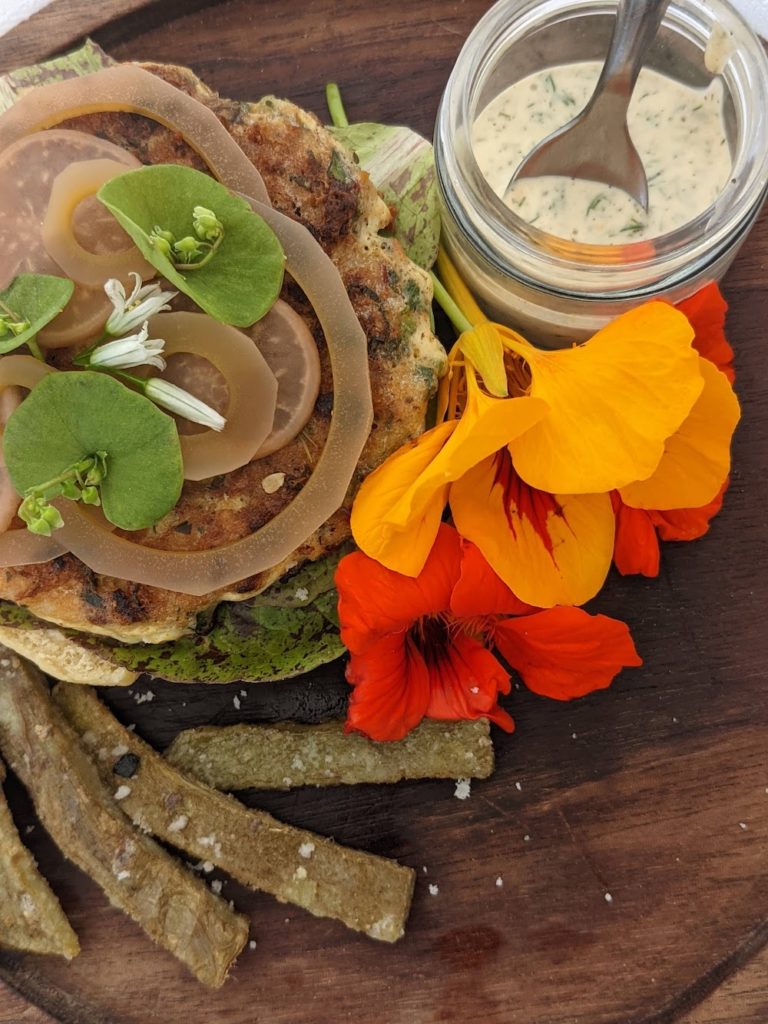
About the author
Mark C. Anderson, EMB's managing editor and "Found Treasures" columnist, welcomes responsible and irresponsible feedback. Correspond via mark@ediblemontereybay.com.
- Mark C. Andersonhttps://www.ediblemontereybay.com/author/markcanderson/
- Mark C. Andersonhttps://www.ediblemontereybay.com/author/markcanderson/
- Mark C. Andersonhttps://www.ediblemontereybay.com/author/markcanderson/
- Mark C. Andersonhttps://www.ediblemontereybay.com/author/markcanderson/



